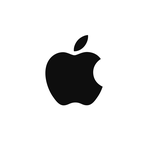The Rise and Fall of Mac Apps: A Tale of Feline Protection and Social Media Shifts
August 3, 2024, 12:06 am
In the world of technology, change is the only constant. Two recent developments in the macOS ecosystem highlight this truth. One is a quirky app designed to protect keyboards from curious cats. The other is the disappearance of a familiar social media client. Both stories reflect broader trends in app development and user experience.
First, let’s talk about Catboard. This new utility has emerged as a savior for cat owners. Imagine a world where your feline friend can roam freely without the fear of accidentally sending a message or deleting an important file. Catboard is a simple solution. It blocks the keyboard, allowing only the trackpad and mouse to function. It’s a one-trick pony, but it does its job well.
Available in the Russian App Store for 199 rubles, Catboard is a paid app. Users can only purchase it through mobile operator accounts, a limitation imposed by sanctions. This restriction adds a layer of complexity for potential buyers. Yet, the app’s functionality is straightforward. A cat icon appears in the menu bar. Click it, and you can activate or deactivate the keyboard lock. It’s a seamless integration into the macOS environment.
The developer claims that Catboard fits right in with macOS aesthetics. It’s a simple, elegant solution for a common problem. Cat owners rejoice! No more accidental keyboard chaos. But there’s a catch. While Catboard is a paid app, a similar tool called CatLock is available for Windows users at no cost. CatLock is open-source, making it accessible to all. This raises questions about the pricing strategy of Catboard. Is it worth the cost for a single function?
Now, let’s shift gears to the disappearance of the Twitter app for macOS. Users recently discovered that the app vanished from the App Store. While it still functions for those who have it, new users are left in the lurch. This situation is a stark reminder of the impermanence of digital tools.
The Twitter app for macOS has had a tumultuous history. Initially abandoned in 2018, it was revived a year later using Apple’s Catalyst technology. This allowed developers to port the iPad version to macOS, streamlining development and reducing costs. It was a clever move, but it seems the strategy has run its course.
Now, users are directed to the X app, the new name for Twitter. This app is essentially the iPad version, repurposed for Mac. It’s a stopgap solution, but it lacks the full functionality that many users expect. The transition from Twitter to X has been rocky. Users are left grappling with a less-than-ideal experience.
These two stories reflect a larger trend in the tech world. Apps are becoming more specialized, but they also face greater scrutiny. Catboard offers a niche solution for a specific problem. It’s a reminder that sometimes, less is more. But the disappearance of the Twitter app illustrates the volatility of digital platforms.
As companies streamline their offerings, users must adapt. The rise of single-function apps like Catboard may signal a shift towards minimalism in software design. However, the loss of established apps like Twitter raises concerns about accessibility and user choice.
In the end, both stories underscore the importance of adaptability. Cat owners can rejoice in their newfound keyboard protection. Meanwhile, social media users must navigate the changing landscape of apps. The tech world is a wild ride, full of ups and downs.
In conclusion, the emergence of Catboard and the disappearance of the Twitter app highlight the dual nature of technology. On one hand, we have innovative solutions that cater to specific needs. On the other, we face the uncertainty of shifting platforms and disappearing tools. As users, we must stay vigilant and adaptable. The landscape may change, but our need for effective tools remains constant.
In this ever-evolving digital age, one thing is clear: the only constant is change. Whether it’s a cat-friendly keyboard lock or a new social media app, we must embrace the journey. The future is unwritten, and it’s up to us to navigate it.
First, let’s talk about Catboard. This new utility has emerged as a savior for cat owners. Imagine a world where your feline friend can roam freely without the fear of accidentally sending a message or deleting an important file. Catboard is a simple solution. It blocks the keyboard, allowing only the trackpad and mouse to function. It’s a one-trick pony, but it does its job well.
Available in the Russian App Store for 199 rubles, Catboard is a paid app. Users can only purchase it through mobile operator accounts, a limitation imposed by sanctions. This restriction adds a layer of complexity for potential buyers. Yet, the app’s functionality is straightforward. A cat icon appears in the menu bar. Click it, and you can activate or deactivate the keyboard lock. It’s a seamless integration into the macOS environment.
The developer claims that Catboard fits right in with macOS aesthetics. It’s a simple, elegant solution for a common problem. Cat owners rejoice! No more accidental keyboard chaos. But there’s a catch. While Catboard is a paid app, a similar tool called CatLock is available for Windows users at no cost. CatLock is open-source, making it accessible to all. This raises questions about the pricing strategy of Catboard. Is it worth the cost for a single function?
Now, let’s shift gears to the disappearance of the Twitter app for macOS. Users recently discovered that the app vanished from the App Store. While it still functions for those who have it, new users are left in the lurch. This situation is a stark reminder of the impermanence of digital tools.
The Twitter app for macOS has had a tumultuous history. Initially abandoned in 2018, it was revived a year later using Apple’s Catalyst technology. This allowed developers to port the iPad version to macOS, streamlining development and reducing costs. It was a clever move, but it seems the strategy has run its course.
Now, users are directed to the X app, the new name for Twitter. This app is essentially the iPad version, repurposed for Mac. It’s a stopgap solution, but it lacks the full functionality that many users expect. The transition from Twitter to X has been rocky. Users are left grappling with a less-than-ideal experience.
These two stories reflect a larger trend in the tech world. Apps are becoming more specialized, but they also face greater scrutiny. Catboard offers a niche solution for a specific problem. It’s a reminder that sometimes, less is more. But the disappearance of the Twitter app illustrates the volatility of digital platforms.
As companies streamline their offerings, users must adapt. The rise of single-function apps like Catboard may signal a shift towards minimalism in software design. However, the loss of established apps like Twitter raises concerns about accessibility and user choice.
In the end, both stories underscore the importance of adaptability. Cat owners can rejoice in their newfound keyboard protection. Meanwhile, social media users must navigate the changing landscape of apps. The tech world is a wild ride, full of ups and downs.
In conclusion, the emergence of Catboard and the disappearance of the Twitter app highlight the dual nature of technology. On one hand, we have innovative solutions that cater to specific needs. On the other, we face the uncertainty of shifting platforms and disappearing tools. As users, we must stay vigilant and adaptable. The landscape may change, but our need for effective tools remains constant.
In this ever-evolving digital age, one thing is clear: the only constant is change. Whether it’s a cat-friendly keyboard lock or a new social media app, we must embrace the journey. The future is unwritten, and it’s up to us to navigate it.

